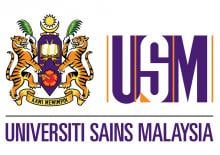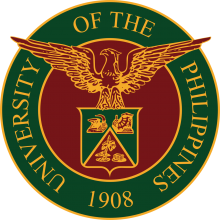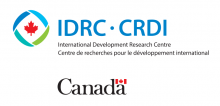Science
News

03 Aug 2008
On June 7, 2008, the Tokyo University of Science and the China University of Petroleum - Beijing signed an academic exchange agreement.

03 Aug 2008
On June 17, 2008, the Tokyo University of Science and the National Taiwan University of Science and Technology signed an academic exchange agreement.

03 Aug 2008
Copenmind is a global event, founded and hosted in Copenhagen, Denmark. The value of COPENMIND is the unique combination of academia and business; a cutting-edge platform for partnerships creating the world' s first truly global marketplace for university-industry interaction in relation to technology transfer and research partnerships.

03 Aug 2008
Karolinska Institutet is one of Europe's largest medical universities. It is also Sweden´s
largest center for medical training and research, located in Stockholm, Sweden. Keio
University has entered into the agreement with Karolinska Institutet in 2007.

03 Aug 2008
PENANG, MALAYSIA – The high frequency of buildings with cracks in Malaysia recently prompted a researcher from University Science Malaysia (USM) to successfully find a solution to the issue.

03 Aug 2008
Summaries of newsworthy papers include Immunology: Avoiding attack when not stressed and Methods: Sex in bacteria for genome-wide interaction screens

31 Jul 2008
Summaries of newsworthy papers include Genetics for mental health disorder, Liquid ethane on Titan, Percolating disease, The impact of microRNA on proteins, Unlocking the door to HIV infection, Creating smart surface networks and Snake fangs bite back

30 Jul 2008
Recognizing the importance of technological innovation, key players in the ICT world are coming together to launch a new grants program for the Asia Pacific information and communication technology (ICT) community.

30 Jul 2008
Researchers in China have identified a potential therapeutic gene for the treatment of a number of human cancers

27 Jul 2008
Keio University is pleased to announce the setup of Keio-NUS CUTE (Connective Ubiquitous Technology for Embodiments) Center in Singapore in response to the Singapore government’s push to partner international Interactive Digital Media (IDM) research institutes with Singapore universities

27 Jul 2008
Scientists have developed electrically powered semiconductor laser diodes that operate at a shorter wavelength than any others used today. The lasers could be used for the next generation of optical storage systems following today’s Blu-ray disks, and will have applications in biomedicine, materials processing and microchips

25 Jul 2008
In a press conference today, The Centre For Archaeological Research Malaysia unveiled their initial analysis of the oldest burial site found in the historic city of Malacca, recently designated a UNESCO World Heritage Site. Malacca was a strategic trading post for Southeast Asia in the 15th and 16th century.

25 Jul 2008
Technology transfer program signifies actual implementation of an academic, government agency and private sector partnership with Nanobiotix of France

23 Jul 2008
Summaries of newsworthy papers include Ecology: The unrealized power of parasites, Materials: Flexible electronic networks of carbon nanotubes and Astrophysics: Accretion disks show their true colours

23 Jul 2008
In a study conducted on the relationship of taste to food preference and body mass index, a significant relationship was found between taste threshold on the one hand, and energy and nutrient intakes on the other; also between 6-n-propylthiouracil (PROP) taster status and food preference.

23 Jul 2008
The Dean of the University of the Philippines College of Science, Dr. Caesar Saloma, receives the 2008 ASEAN Outstanding Scientist and Technology Award for his significant contributions in photonics and signal processing.

23 Jul 2008
Assessment of antioxidant activities of some local root crops in the Philippines by researchers from the University of the Philippines Diliman reveals that the phenolic content of sweet potato has the highest antioxidant property among the local root crops studied.

23 Jul 2008
In Nature China this week - Prestressed multiwalled carbon nanotubes have enhanced mechanical properties that are ideal for building space elevators and more

21 Jul 2008
Comments on the the Sichuan earthquake and cyclone Nargis. Other papers include Genetic origins of the Grey horse, New cancer drugs with reduced side effects, Predicting lung cancer survival, Heavy rains ahead, Fighting tuberculosis with acid, Rafting down biological cascades, Animal behaviour lighting the way, Nanotechnology: Gold standard

19 Jul 2008
Enhancing Household and Community Adaptive Capacity in Dealing with Climate Change in South East Asia

16 Jul 2008
Summaries of newsworthy papers include Mars: Water almost everywhere, Earth science: Setting off a Cretaceous extinction event, Microscopy: Watching the cavorting of once-invisible atoms and How the brain pays attention

16 Jul 2008
In a special News report, Nature asks leading reproductive biologists and clinicians what developments in the field could have an equivalent impact in the next three decades. Millions of babies have now been conceived through IVF – will any of the experts’ latest predictions, including artificial wombs, be as commonplace in 2028?

16 Jul 2008
AIT, Thailand - The Asian Institute of Technology (AIT) invites applications for postdoctoral fellows or research associates in their thematic research area of Climate Change and Sustainable Development.

16 Jul 2008
Hydrogen energy: it attracts hope with its potential as the new, clean, eco-friendly energy of the 21st century. A significant topic on the front lines of developmental research is the establishment of hydrogen-synthesizing techniques which would produce energy suitable as a foundation for society, supporting both industry and everyday life.

16 Jul 2008
Material durability is a major concern in structural design as it affects the particular material service life. A research is currently being conducted to investigate the effect of Malaysia's tropical climate on the strength of epoxy resin concrete structure.

16 Jul 2008
In Nature China this week - The soil bacteria Streptomyces can be manipulated to produce polyene antibiotics with improved pharmacological properties. Other highlights include Aquaculture: Stressful scallops, Nanowaste: Reduce, reuse, recycle, High-temperature superconductivity: Warmer than expected

14 Jul 2008
In the future, we hope to use advanced multi-core processor to create high-performance cell phones driven by solar batteries, safer, comfortable and energy-saving automobiles, small, quiet desktop super-computers and small food generating robots driven by sunlight.

14 Jul 2008
SERDANG, MALAYSIA - Four Universiti Putra Malaysia (UPM) researchers won six medals including two gold awards during the Invention and New Product Exposition (INPEX) held at Pittsburgh, Pennsylvania, USA recently.

13 Jul 2008
WHILE the G8 continues to make more promises on how to save the world, a Malaysian is putting his money where his mouth is. Tan Sri Mustapha Kamal of the well-known EmKay group took the initiative to launch the Belum Rainforest Research Centre last week.

13 Jul 2008
The Irrawaddy Delta, Myanmar is a high-risk area for groundwater contamination with arsenic, suggests research published online this week in Nature Geoscience.Other papers include A common inflammatory pathway in silicosis and Alzheimer’s, Genetic risk factor for osteoarthritis and Shells ruled by mass extinctions
Giants in history
Chinese biochemist Chi Che Wang (1894 - 1979), one of the first Chinese women to study abroad, advanced to prominent research positions at American institutions including the University of Chicago and the Northwestern University Medical School.
Ruby Sakae Hirose (1904 – 1960) was a Japanese-American scientist whose research contributed significantly to our understanding of blood clotting, allergies and cancer.
Chinese electron microscopy specialist Li Fanghua (6 January 1932 – 24 January 2020) facilitated the high-resolution imaging of crystal structures by eliminating interference.
Sálim Moizuddin Abdul Ali (12 November 1896 – 20 June 1987), commonly referred to as the Birdman of India, was the first person to conduct systematic surveys of birds from across India.
Haisako Koyama (1916 – 1997) was a Japanese solar observer whose dedication to recording sunspots – cooler parts of the sun’s surface that appear dark – produced a sunspot record of historic importance.
Michiaki Takahashi (17 February 1928 – 16 December 2013) was a Japanese virologist who developed the first chickenpox vaccine.
Toshiko Yuasa (11 December 1909 – 1 February 1980) was the first Japanese female physicist whose research on radioactivity shed light on beta decay – the process in which an atom emits a beta particle (electron) and turns into a different element.
Angelita Castro Kelly (1942-2015) was the first female Mission Operations Manager (MOM) of NASA. She spearheaded and supervised the Earth Observing System missions during its developmental stage.
Malaysia’s first astrophysicist, Mazlan binti Othman (born 11 December 1951) was instrumental in launching the country’s first microsatellite, and in sending Malaysia’s first astronaut, Sheikh Muszaphar Shukor, into space.
Known as Mr. Natural Rubber, chemist and researcher B. C. Shekhar (17 November 1929 – 6 September 2006) introduced a number of technical innovations that helped put Malaysia’s natural rubber industry on the world map.
Shinichiro Tomonaga (31 March 1906 – 8 July 1979), together with Richard Feynman and Julian Schwinger, was awarded the Nobel Prize in Physics in 1965, for their contributions to advance the field of quantum electrodynamics. Tomonaga was also a strong proponent of peace, who actively campaigned against the proliferation of nuclear weapons and promoted the peaceful use of nuclear energy.
South Korean theoretical physicist Daniel Chonghan Hong (3 March 1956 – 6 July 2002) achieved fame in the public sphere through his research into the physics of popcorn.
Japanese chemist Kenichi Fukui (4 October 1918 – 9 January 1998) was the first Asian scientist to be awarded the Nobel Prize in Chemistry. Together with Roald Hoffman, he received this honour in 1981 for his independent research into the mechanisms of chemical reactions.
Chinese palaeontologist, archaeologist and anthropologist Pei Wenzhong (January 19, 1904 – September 18, 1982) is regarded as a founder of Chinese anthropology.
Physicist Narinder Singh Kapany (31 October 1926 – 4 December 2020) pioneered the use of optical fibres to transmit images, and founded several optical technology companies. Born in Punjab, India, he worked at a local optical instruments factory before moving to London for PhD studies at Imperial College. There, he devised a flexible fibrescope to convey images along bundles of glass fibres.
Japanese physicist Ukichiro Nakaya (1900-1962) made the world’s first artificial snowflakes. He started his research on snow crystals in the early 1930s at Hokkaido University, where there is an unlimited supply of natural snow in winter. By taking over 3,000 photographs, he established a classification of natural snow crystals and described their relationship with weather conditions.
The field of solid-state ionics originated in Europe, but Takehiko Takahashi of Nagoya University in Japan was the first to coin the term ‘solid ionics’ in 1967. ‘Solid-state ionics’ first appeared in 1971 in another of his papers, and was likely a play on ‘solid-state electronics’, another rapidly growing field at the time.
Charles Kuen Kao (Nov. 4, 1933 to Sept. 23, 2018) was an engineer who is regarded as the father of fibre optics. His work in the 1960s on long distance signal transmission using very pure glass fibres revolutionized telecommunications, enabling innovations such as the Internet.
Chika Kuroda (24 March 1884 – 8 November 1968) was a Japanese chemist whose research focussed on the structures of natural pigments.
Motoo Kimura (13 November 1924 – 13 November 1994) was a Japanese theoretical population geneticist who is best remembered for developing the neutral theory of molecular evolution.
Meghnad Saha (6 October 1893 – 16 February 1956) was an Indian astrophysicist best known for formulating the Saha ionization equation which describes the chemical and physical properties of stars.
Sir Jagadish Chandra Bose (30 November 1858 – 23 November 1937) was a scientist and inventor who contributed to a wide range of scientific fields such as physics, botany and biology.
Osamu Shimomura (27 August 1928 – 19 October 2018) was a Japanese organic chemist and marine biologist who dedicated his career to understanding how organisms emitted light.
Subrahmanyan Chandrasekhar (19 October 1910 – 21 August 1995) was an Indian astrophysicist who studied the structure and evolution of stars.
Joo-myung Seok (November 13, 1908 – October 6, 1950) was a Korean butterfly entomologist who made important contributions to the taxonomy of the native butterfly species in Korea.
Mathematician Maryam Mirzakhani (12 May 1977 – 14 July 2017) was the first and only woman and Iranian to date to win the Fields Medal in 2014 for her work on curved surfaces.
Sir Chandrasekhara Venkata Raman (7 November 1888 – 21 November 1970) was an Indian physicist who performed ground-breaking research in the field of light-scattering.
Mohammad Abdus Salam (29 January 1926 – 21 November 1996) was a theoretical physicist and the first Pakistani to receive a Nobel Prize in science.
Srinivasa Ramanujan (22 December 1887 – 26 April 1920) was a math prodigy and widely considered one of India’s greatest mathematicians. Despite having almost no formal training in mathematics, he made substantial contributions to mathematical analysis, number theory, infinite series and continued fractions.
Gopalasamudram Narayanan Ramachandran (8 October 1922 – 7 April 2001) is best known for developing the Ramachandran plot to understand the structure of short chains of amino acids, known as peptides.
Hitoshi Kihara (1893 – 1986) was one of the most famous Japanese geneticists of the 20th century. One of his most significant contributions was identifying sex chromosomes (X and Y) in flowering plants.
Chien-Shiung Wu (31 May 1912 – 16 February 1997) was an experimental physicist who made several important contributions to nuclear physics. Wu worked on the Manhattan Project – a top-secret program for the production of nuclear weapons during World War II and helped to develop a process for separating uranium into U235 and U238.
Meemann Chang (born 17 April 1936) is a Chinese palaeontologist who studied the fossils of ancient fish to understand the evolution of life. By examining fossils, she uncovered new insights on how vertebrates, animals with a backbone, migrated from the sea and became adapted to live on land.
Bibha Chowdhuri (1913 – 2 June 1991) was an Indian physicist who researched on particle physics and cosmic rays. In 1936, she was the only female to complete a M.Sc. degree at the University of Calcutta.
Lin Lanying (7 February 1918 – 4 March 2003) was a Chinese material engineer remembered for her contributions to the field of semiconductor and aerospace materials. Lanying was born into a family who did not believe in educating girls and she was not allowed to go to school.
Japanese geochemist Katsuko Saruhashi developed the first method and tools for measuring carbon dioxide in seawater





































